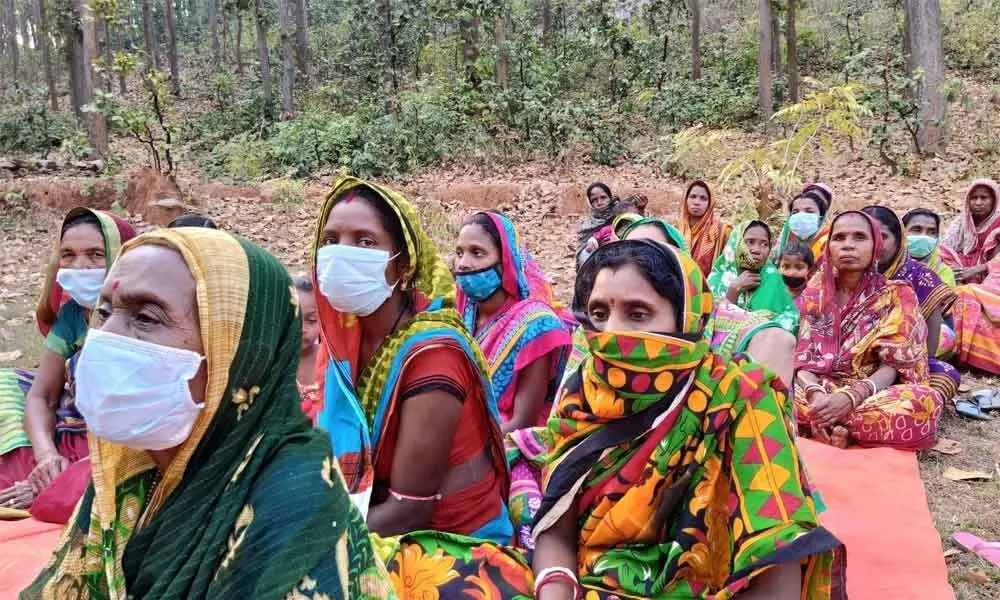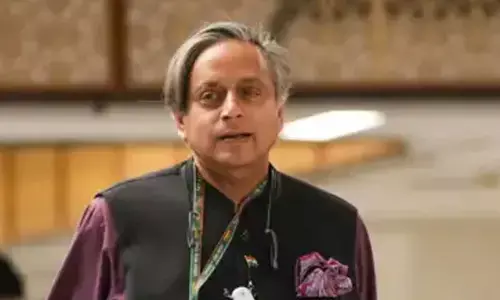Odisha women lead as green warriors

Odisha women lead as green warriors
Several studies and reports have found that local communities play a big role in conservation, sometimes bigger than the government agencies. A great reminder of this is the Chipko Movement, where women resisted deforestation in Uttar Pradesh (now Uttarakhand). Or, how a tribe in Arunachal Pradesh has prevented the critically-endangered Bugun Liocichla songbird from going extinct.
UN Special Rapporteur Victoria Tauli-Corpuz explained the effectiveness of community-led conservation in a 2018 study, titled Cornered by Protected Areas: "Many (indigenous people and local communities) share an ethical interconnection with nature through their languages, beliefs and practices, reflecting a commitment to respecting and caring for the natural world."
A case in point will be the tribal women of Odisha, who have been guarding their forests against smugglers for many decades -- voluntarily. Armed with nothing but a stick, women go into local forests in groups of three to six to drive the timber thieves away. If they catch one, they issue a warning and confiscate the produce being smuggled. When matters escalate, they either bring these thieves to the village meeting and demand a public apology or fine or involve an NGO to initiate police action.
This is thengapalli, a practice where every household takes turns to patrol their community forest with a stick (thenga means stick and palli means turn).
'Smuggling reduced, forests revived'
Thengapalli started in Odisha's Nayagarh district in the early 1970s but became popular in the 1990s when women came forward to protect forests alongside men.
Cut to the present.
Women are solely responsible for keeping vigil on the forests in at least 300 villages in Nayagarh. In the Gunduribadi village of the district, the women-led forest protection committee has rejuvenated at least 500 acres of forest land because the smuggling of timber and other forest produce has reduced.
"We can spot the Giant Indian Squirrel in the Nayagarh belt, which wasn't the case a decade ago. Even the soil moisture retention has improved," Manas Mishra, an environment activist who has studied the forest-dwelling communities of the Nayagarh-Khorda belt, talks of the changes these women have brought.
Thengapalli has spread to other districts as well. The presence of women sentinels in smaller pockets of the Mayurbhanj district, such as Punasia, has brought down the menace of smuggling, and with that, the need for patrolling at night and carrying sticks as their weapon. They provide an extra layer of surveillance to the forests within the Similipal Tiger Reserve in Mayurbhanj.
Dhaneswar Mahanta, who works with Vasundhara in the Reserve limits, explains, "The forest department deploys two to five guards per forest. On that, these committees send at least three volunteers through the day."
The practice has also crossed over to the bordering state of Jharkhand and has become a case study that is now studied in the schools of Hampshire in England.
'Women depend on forests more'
According to Y. Giri Rao, executive director of Vasundhara, a non-profit organisation that documents the forest conservation methods in Odisha, natural resources mean a lot more to women than men. "If the forest cover is depleted, the women would have to walk an extra mile to collect fuel for their daily needs," he gives an example.
This dependence did indeed encourage Sudamani Mahakud to take up thengapalli in her village Punasia. "If I need fuel to cook food, I can take leaves and twigs from the forest. If I need food to eat, the forest can give me greens and tubers. Some trees also have medicinal value. They are a source of food for the cattle as well.
What more reasons do I need to protect the forest? I exist because the forest does," shares the 65-year-old, who has been guarding the forests for over two decades.
No sooner did women start protecting local forests, the conflict with the smugglers reduced. "If a group of men would confront smugglers, there were chances [and many instances] of fights. With women, there would only be verbal exchanges. In most cases, the smugglers belonged to neighbouring villages and so they would avoid confrontation with these women," explains Sanjukta Basa, who runs NGO Sangram in the Mayurbhanj district.
But breaking into a male bastion came with its share of pushback. "Since I would visit the police station often, I was labelled an 'undignified girl'. It became difficult for my parents to find me a groom. But it didn't matter to me. I had grown up listening to the stories about forests and I did not want to lose them," says Sabita Naik, who is in her late 40s and has gone from being a thengapalli volunteer to a forest guard in Mayurbhanj.
The rules of patrolling are decided mutually, factoring in when women can take time off from their domestic duties. If three women go for the 6am-9am shift, the second group goes out between 9am and 12pm. This continues till 9pm or 11pm. Guidelines to collect the forest produce are also laid down. For instance, a villager can take bamboo only after getting approval from the village committee.
Communities await forest title
These women had taken up forest management long before The Forest Rights Act (FRA) was enacted in 2006. The Act gives these communities the right to use and manage traditionally-held forest lands. Three years later, the Odisha government declared that the forest title holders will get a house under the Indira Awas Yojana (now Pradhan Mantri Awas Yojana).
"Now people have started getting work under MGNREGA, especially related to forest land development," Rao informs how the Act has given an impetus to the forest conservation movement in Odisha, thengapalli included.
They may have got a push to do better but they haven't got the Community Forest Rights (CFR) yet. According to the data collected by Vasundhara, close to 32, 570 villages in Odisha have the potential to get CFR but only 2,800 applications have been approved and 2,300 titles given.
While the government officials say the delay is mostly due to insufficient documents, activists say the administration is being callous. "We are talking about the rights of people who have been associated with forests for generations. They may not always have the documents. Many of them are not aware of the legalities involved and need guidance," says Bhagyalaxmi, a social activist in the region.
Forest protection can be strengthened if these communities get CFR because their understanding of the forest ecosystem is profound and unbiased, says Rao. Or, as Mahakud puts it: "Forest might be an entity for others, but for us, it is our means of survival. We can't think of a life without it."
A reassuring thought this is because multiple reports suggest that when women are involved in conservation activities, the results show.













